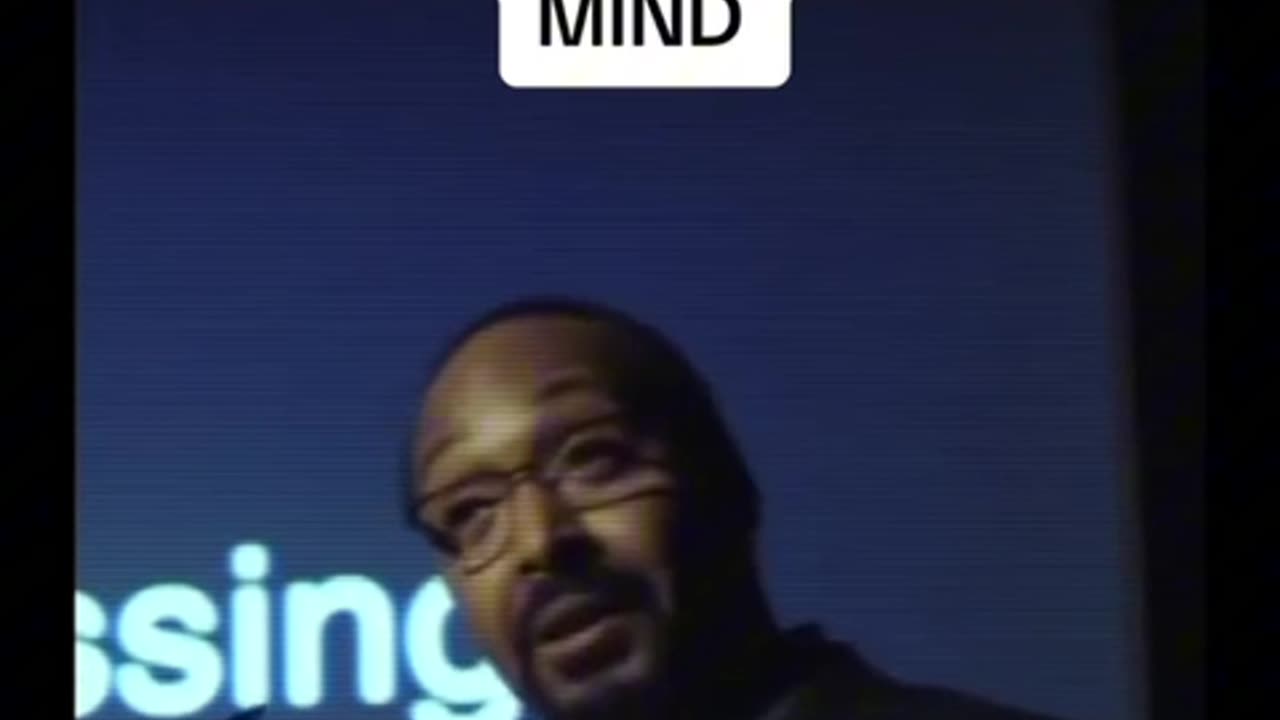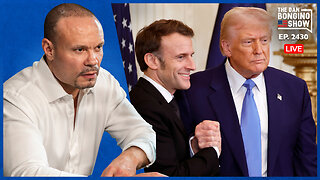Premium Only Content

The Fabric of Perception: Unveiling the Layers of Reality and Consciousness
Our senses are our primary gateways to the world, the conduits through which we experience life, interact with others, and build our understanding of reality. However, what if the reality we perceive is not the world as it truly is, but rather a constructed version shaped by our brains? This concept challenges the very foundations of our understanding and invites us to explore the profound implications of perception, consciousness, and the nature of reality itself.
### **The Intricate Dance of Perception: Beyond the Surface of Reality**
Perception is not a passive reception of information; it is an active, dynamic process where the brain engages in a continuous dance with the external world, interpreting and constructing reality based on a complex interplay of sensory inputs, past experiences, and cognitive expectations. This process is so seamless and instantaneous that we often take it for granted, assuming that what we perceive is an accurate representation of the world around us. Yet, this assumption is far from the truth.
#### **The Role of the Brain in Constructing Reality**
The brain, a marvel of complexity, is not merely a receiver of sensory data; it is an interpreter, a creator of meaning. When our sensory organs—such as the eyes and ears—receive stimuli, these signals are converted into electrical impulses that are sent to the brain. However, these impulses are not direct reflections of the external world; they are raw data that the brain must decode and interpret.
For instance, when you hear a series of sounds or see a sequence of images, your brain does not simply relay these signals as they are. Instead, it actively processes them, fills in gaps, and makes predictions based on your prior knowledge and expectations. This process, known as **predictive coding**, suggests that the brain is constantly generating hypotheses about the world and updating these predictions based on incoming sensory information.
This predictive nature of the brain is why our perceptions can be so easily influenced by context, suggestion, and expectation. For example, in auditory perception experiments where listeners are asked to identify a phrase from a distorted recording, the brain's predictions about what it "should" hear can lead to different interpretations of the same sound. The phrase heard may change depending on what the listener expects or is told to listen for, illustrating how perception is as much about the brain's internal models as it is about the external stimuli.
#### **The Neuroscience of Perception: The Brain’s Interpretive Networks**
The brain’s interpretation of sensory data involves several key neural networks that work in concert to create our experience of reality:
1. **The Default Mode Network (DMN):** Often active during rest and self-referential thought, the DMN is involved in constructing the narrative self—the sense of who we are and how we relate to the world. It plays a crucial role in integrating past experiences with present perceptions, helping to shape our understanding of reality based on our personal history and identity.
2. **The Salience Network:** This network is responsible for detecting and filtering important stimuli from the environment, determining what is worthy of our attention. It plays a pivotal role in shaping our perception by highlighting certain aspects of reality while downplaying others, based on what is deemed relevant or significant.
3. **Mirror Neurons:** These neurons, which fire both when we perform an action and when we observe others performing the same action, contribute to social learning and empathy. They also play a role in reinforcing group norms and shared realities, as they allow us to internalize the behaviors and beliefs of those around us.
These networks work together to create a coherent, albeit subjective, experience of the world. The interplay between them demonstrates that perception is not just about what we sense, but about how our brain interprets and constructs that sensory information into a meaningful reality.
### **The Philosophy of Perception: Questioning the Nature of Reality**
The realization that our perception of reality is a construct leads us to profound philosophical questions about the nature of truth, knowledge, and existence. Throughout history, philosophers have grappled with these questions, offering insights that challenge our assumptions and expand our understanding.
#### **Descartes and the Nature of Reality**
René Descartes, the father of modern philosophy, famously declared, "Cogito, ergo sum"—"I think, therefore I am." This statement reflects the idea that our consciousness, our ability to think and perceive, is the most fundamental proof of our existence. Descartes questioned whether anything beyond the mind could be known with certainty, suggesting that all external reality could be an illusion—a concept that resonates with the idea that our perception is a construct of the brain.
Descartes’ exploration of **skepticism**—the idea that we cannot trust our senses to deliver the truth—forces us to consider the possibility that what we perceive as reality may be far removed from the true nature of existence. If our perceptions are shaped by the mind, then what we consider "real" is deeply subjective, contingent upon our mental processes rather than an objective external world.
#### **Kant’s Phenomena and Noumena**
Immanuel Kant expanded on these ideas with his distinction between **phenomena** (the world as we experience it) and **noumena** (the world as it exists in itself). According to Kant, our understanding of the world is limited to phenomena—what we can perceive and interpret with our senses and mind. The noumenal world, the true essence of reality, lies beyond our perceptual capabilities, inaccessible to human cognition.
This duality suggests that our grasp of reality is inherently limited and mediated by our cognitive faculties. We do not perceive the world directly; instead, we perceive a version of it that has been filtered, shaped, and constructed by our minds. This idea aligns with modern neuroscience’s understanding of perception, where the brain actively constructs reality based on sensory inputs and internal models.
#### **Nietzsche’s Constructed Truths**
Friedrich Nietzsche took this exploration further by challenging the very notion of truth. He argued that what we consider to be "truth" is often a construct—a set of beliefs that serve the interests of those in power. According to Nietzsche, reality is not a fixed, objective entity, but a fluid and dynamic process that is shaped by cultural, social, and psychological forces.
In this view, belief systems—whether religious, political, or ideological—are not reflections of objective reality, but tools used to control and manipulate perception. This concept is particularly relevant when considering how modern media and technology can shape our understanding of the world, creating a shared reality that may have little to do with objective truth.
### **The Subjectivity of Experience: Reality as a Personal Construct**
If our perception of reality is a construct of the mind, then it follows that each individual experiences a unique version of reality. This subjectivity is evident in everyday experiences, where different people can witness the same event and come away with vastly different interpretations.
#### **The Influence of Cognitive Biases**
Cognitive biases—systematic patterns of deviation from rationality in judgment—play a significant role in shaping our perception of reality. These biases can lead us to see what we expect to see, remember what we expect to remember, and interpret information in ways that reinforce our pre-existing beliefs.
**Confirmation bias**, for example, leads us to seek out and prioritize information that confirms our existing beliefs while dismissing or ignoring information that contradicts them. This bias reinforces our subjective reality, making it difficult to see beyond the constructs of our own minds.
**The backfire effect** is another cognitive bias where people who are confronted with evidence that contradicts their beliefs actually strengthen their original beliefs instead of revising them. This demonstrates the power of the mind to protect its constructed reality, even in the face of conflicting evidence.
#### **The Role of Culture and Society**
Culture and society also play crucial roles in shaping our perception of reality. The shared beliefs, values, and narratives of a culture provide a framework within which individuals construct their reality. This framework influences how we interpret our experiences, what we consider to be true, and how we interact with the world.
For example, cultural norms dictate what is considered normal or abnormal behavior, what is considered beautiful or ugly, and what is considered right or wrong. These norms are internalized by individuals, shaping their perception of reality and influencing their behavior.
### **The Power of Perception: Shaping Our World**
The realization that reality is a construct of the mind has profound implications for how we live our lives and interact with the world. It suggests that by changing our perception, we can change our experience of reality.
#### **Mindfulness and Perception**
Mindfulness—the practice of being present and fully engaged with the here and now—offers a way to become more aware of how our minds construct reality. By observing our thoughts and sensations without judgment, we can begin to see the layers of interpretation and expectation that shape our experience. This awareness allows us to question our assumptions and open ourselves to new perspectives.
**Mindful awareness** can also help us recognize when our perceptions are being influenced by cognitive biases or cultural norms. By becoming more aware of these influences, we can begin to see beyond them, allowing us to experience reality more fully and authentically.
#### **Changing Our Perception, Changing Our Reality**
The idea that reality is a construct of the mind suggests that by changing our perception, we can change our reality. This is not just a metaphorical concept; it has practical implications for how we live our lives.
For example, by changing our perception of a challenging situation, we can change how we respond to it. Instead of seeing a challenge as a threat, we can see it as an opportunity for growth. This shift in perception can lead to different actions and outcomes, effectively changing our reality.
In a broader sense, the understanding that reality is subjective and constructed by the mind can empower us to take greater responsibility for our lives. It suggests that we are not passive recipients of reality, but active creators of it. By changing our thoughts, beliefs, and perceptions, we can reshape our experiences and ultimately, the very fabric of our existence. This insight is not only liberating but also profoundly transformative, offering a path toward personal empowerment and deeper self-awareness.
### **The Transformative Power of Conscious Creation**
When we recognize that we are the architects of our reality, the possibilities for transformation become limitless. This shift in perspective encourages us to move from a reactive state, where we are merely responding to external circumstances, to a proactive state, where we consciously create the life we desire.
#### **Reprogramming the Mind**
To harness the power of perception in shaping reality, it is essential to understand the mechanisms by which our beliefs and thoughts are formed. Much of our perception is based on subconscious programming—deep-seated beliefs and patterns ingrained in us from a young age. These programs operate automatically, influencing our thoughts, emotions, and actions without our conscious awareness.
Through practices such as **neuroplasticity exercises**, **affirmations**, and **visualization**, we can begin to reprogram the mind, replacing limiting beliefs with empowering ones. This process involves deliberately focusing on positive, constructive thoughts and visualizing desired outcomes, thereby creating new neural pathways that reinforce these beliefs and bring them into reality.
#### **The Role of Intention and Focus**
The power of intention and focus cannot be overstated in the process of reality creation. When we set a clear intention and maintain focused attention on our goals, we align our thoughts, emotions, and actions with the desired outcome. This alignment creates a powerful energetic resonance that attracts opportunities, resources, and circumstances that support our goals.
**Intention setting** is a practice that involves clearly defining what we want to achieve and committing to it with unwavering focus. By regularly reaffirming our intentions and maintaining a positive, optimistic outlook, we amplify our ability to manifest our desires.
#### **Mind-Body Connection and Embodiment**
The mind-body connection plays a crucial role in the process of creating reality. Our thoughts and emotions are not just abstract concepts; they have tangible effects on our physical bodies and the world around us. When we experience positive emotions such as joy, love, and gratitude, our bodies respond by releasing beneficial hormones and chemicals that enhance our well-being and vitality.
Conversely, negative emotions such as fear, anger, and stress can manifest as physical ailments and blockages that hinder our ability to create the life we desire. By cultivating a healthy mind-body connection through practices such as **meditation**, **yoga**, and **breathwork**, we can enhance our overall well-being and align ourselves with the flow of positive energy.
**Embodiment** is the practice of fully integrating our intentions and beliefs into our physical being. This involves not only thinking and speaking about our goals but also acting in ways that reflect our commitment to them. By embodying the qualities and behaviors associated with our desired reality, we accelerate the manifestation process and bring our goals to fruition.
### **The Collective Creation of Reality**
While individual perception plays a significant role in shaping personal reality, it is important to recognize that reality is also a collective creation. The shared beliefs, values, and narratives of a community or society contribute to the collective experience of reality. This collective reality, in turn, influences individual perceptions, creating a feedback loop that reinforces the dominant worldview.
#### **The Power of Collective Beliefs**
Collective beliefs have a profound impact on the world we live in. They shape cultural norms, social structures, and even the laws of physics as we understand them. When a critical mass of individuals holds a particular belief, it can manifest in the collective reality, influencing everything from societal trends to global events.
For example, the belief in scarcity—whether of resources, opportunities, or love—can create a reality where scarcity is experienced by many. Conversely, a belief in abundance can foster a reality where resources are plentiful, and opportunities abound. By consciously choosing to align with positive, life-affirming collective beliefs, we can contribute to the creation of a more harmonious and prosperous world.
#### **Group Intentions and Manifestation**
The power of collective intention is another key factor in shaping reality. When a group of individuals comes together with a shared goal or intention, the combined energy amplifies the manifestation process. This phenomenon is often observed in **group meditations**, **prayer circles**, and **visioning sessions**, where participants focus their collective energy on a common outcome.
Research in the field of **quantum physics** has shown that the observer effect—the idea that the act of observation can influence the outcome of an event—applies not only to individuals but also to groups. When a group of people holds a shared vision, their collective focus can influence the outcome in ways that may seem miraculous or inexplicable.
By participating in group intentions and collaborative projects, we can harness the power of collective consciousness to create positive change in the world. This practice of **co-creation** allows us to tap into the infinite potential of the collective mind and contribute to the evolution of human consciousness.
### **Expanding Consciousness: The Path to Enlightenment**
As we delve deeper into the understanding of perception and reality, we begin to see that the ultimate goal is not just to create a better external reality but to expand our consciousness and achieve enlightenment. Enlightenment is the realization of the true nature of reality—a state of awareness where the illusion of separation dissolves, and we experience oneness with all that is.
#### **Transcending the Illusion**
The journey to enlightenment involves transcending the illusion of the physical world and recognizing the underlying unity of all things. This requires letting go of attachment to the ego and the material world and embracing the infinite, formless nature of consciousness.
Meditation, mindfulness, and other spiritual practices can help us transcend the illusion and connect with the deeper layers of reality. By quieting the mind and turning inward, we can access higher states of consciousness where the boundaries between self and other, subject and object, begin to blur. In these states, we experience the interconnectedness of all life and the realization that we are not separate from the universe but an integral part of it.
#### **Awakening to the True Self**
Enlightenment is not about acquiring new knowledge or achieving a specific goal; it is about awakening to the true nature of the self. The true self is not the ego or the personality but the infinite, eternal consciousness that exists beyond time and space.
This awakening is a process of remembering—remembering who we truly are and our connection to the divine. It is a return to our original state of being, where we experience life from a place of love, compassion, and unity.
As we awaken to the true self, our perception of reality shifts dramatically. We no longer see ourselves as separate individuals struggling to survive in a hostile world; instead, we recognize that we are co-creators of reality, with the power to shape our experiences and contribute to the collective evolution of consciousness.
### **Conclusion: The Infinite Potential of Consciousness**
The exploration of perception, reality, and consciousness reveals the profound truth that we are not passive observers of life but active participants in the creation of our reality. Our thoughts, beliefs, and perceptions shape the world we experience, and by changing them, we can change our reality.
This understanding empowers us to take responsibility for our lives and to consciously create the reality we desire. It also invites us to explore the deeper layers of consciousness and to awaken to our true nature as infinite, divine beings.
As we continue on this journey of self-discovery and enlightenment, we are reminded that the potential for growth, transformation, and creation is limitless. By embracing this potential, we can transcend the illusion of the physical world and step into the fullness of our true power as conscious creators, co-creating a reality that reflects the highest expression of our soul.
-
 1:33
1:33
FragmentsOfTruth
22 hours agoFlight or Fraud? Unpacking the Suspicious Plane Crash Conspiracy
107 -
 1:06:58
1:06:58
The White House
3 hours agoPress Secretary Karoline Leavitt Briefs Members of the Media, Feb. 25, 2025
28.3K23 -
 1:34:46
1:34:46
Russell Brand
3 hours agoControl Slipping: Germany’s Vote, Ukraine, Apple, and Joy Reid – SF543
74K22 -
 57:44
57:44
Winston Marshall
3 hours ago“They Were Hiding THIS!” Michael Shellenberger UNCOVERS Dark Secret About USAID and The Deep State
25.8K14 -
 50:59
50:59
Michael Franzese
1 day agoAmerica’s Biggest Issues EXPOSED by Tomi Lahren
38.8K13 -
 2:55:16
2:55:16
The Dana Show with Dana Loesch
3 hours agoDOGE LAYOFFS FACE BACKLASH | The Dana Show LIVE On Rumble!
15.2K7 -
 1:25:40
1:25:40
Bare Knuckle Fighting Championship
1 day agoThe Bare Knuckle Show with Brian Soscia
20.2K -
 51:01
51:01
TheAlecLaceShow
4 hours agoDan Bongino Joins Kash Patel at FBI | Vivek For Ohio | Where’s the Epstein List | The Alec Lace Show
17K3 -
 55:46
55:46
The Dan Bongino Show
6 hours agoChange Is Coming, And All The Right People Are Panicking (Ep. 2430) - 02/25/2025
875K2.3K -
 1:11:08
1:11:08
The Rubin Report
4 hours agoTimothée Chalamet Stuns Crowd with Speech Pushing This Conservative Value
98.6K52